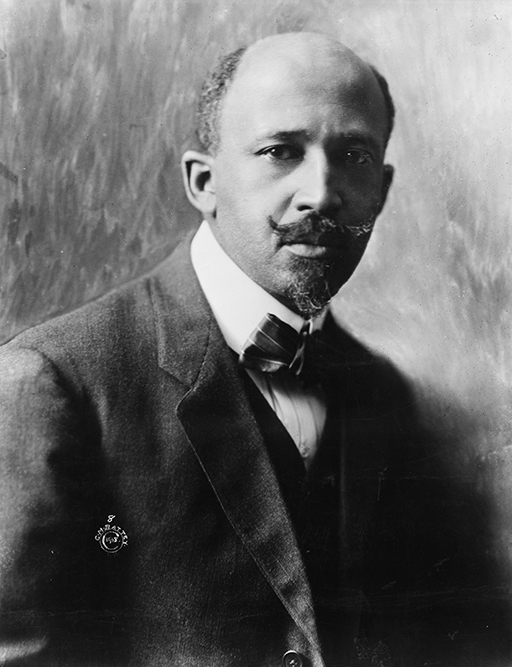2.4 What are the challenges we face in describing ‘race’ in our study of the past?
As discussed earlier, race is something that is not fixed in meaning, and so it can be challenging to accurately use language to describe racialised differences. Some of the primary sources you will read during this course will use derogatory and racist language to describe people’s race and ethnicity. It is important to acknowledge that these words were used in historical documentation – often by governments, police forces, newspapers, employers, among many others – to reinforce systems of discrimination.
Historians try to use language accurately to ensure we understand the past in context, but avoid replicating the systems of discrimination we study. For example, when writing about slavery, we usually talk about ‘enslaved people’ rather than slaves. This language is important because it acknowledges the humanity of enslaved people, instead of using the description forced on them by their enslavers.
This course also uses language that accurately describes people’s experiences and complex identities within their own political and social environment. So, in their session on the Haitian revolution, Dr Anna Plassart and Dr Robin Mackie use the terms ‘Black’ to describe some people and ‘mixed race’ (gens de couleur) to describe others: this reflects the different contemporary social and political experiences of the people they discuss. In the session on human ‘zoos’, Dr Suki Haider describes Sarah Baartman as Khoikhoi – a term to describe one of the Khoe-speaking polities in South Africa, and much more accurate than the pejorative colonial designation of ‘Hottentot’ that was used by Baartman’s contemporaries to describe her origins.
Different words have different meanings in specific contexts, and they often acquire different meanings over time: it is important to pay attention to the words we use to describe people in the past and present. A good example of this is the adoption of the word ‘Negro’ as a very positive term by Black activists like W.E.B. Du Bois in the USA during the early twentieth century; this term is no longer seen as a positive description of identity.
Activity 1
Read the extract below from W.E.B. Du Bois, The Souls of Black Folk and look at the way Du Bois describes racial differences. Consider the following questions and make notes in the box below.
- How does Du Bois describe the tensions between being Black and American?
- What does this tell you about the difficulties faced by Black Americans in the early twentieth century?
- What is the significance of the word ‘Negro’ as a capitalised description of race?
- Pay attention to the lyrical language Du Bois uses. Why might this be important?
…After the Egyptian and Indian, the Greek and Roman, the Teuton and Mongolian, the Negro is a sort of seventh son, born with a veil, and gifted with second-sight in this American world,—a world which yields him no true self-consciousness, but only lets him see himself through the revelation of the other world. It is a peculiar sensation, this double-consciousness, this sense of always looking at one’s self through the eyes of others, of measuring one’s soul by the tape of a world that looks on in amused contempt and pity. One ever feels his twoness,—an American, a Negro; two souls, two thoughts, two unreconciled strivings; two warring ideals in one dark body, whose dogged strength alone keeps it from being torn asunder.
The history of the American Negro is the history of this strife,—this longing to attain self-conscious manhood, to merge his double self into a better and truer self. In this merging he wishes neither of the older selves to be lost. He would not Africanize America, for America has too much to teach the world and Africa. He would not bleach his Negro soul in a flood of white Americanism, for he knows that Negro blood has a message for the world. He simply wishes to make it possible for a man to be both a Negro and an American, without being cursed and spit upon by his fellows, without having the doors of Opportunity closed roughly in his face.
Discussion
W.E.B. Du Bois (1868–1963) was an American sociologist, who argued that education would be a key factor in gaining political and civil equality for African Americans. Writing in the early twentieth century, at a time when Black Americans were subjected to severe social, economic and political discrimination, Du Bois explored what he called the ‘double consciousness’ of African Americans: how could they embrace both American and Black identities in such a discriminatory society? Like most of his contemporaries, Du Bois used the term ‘Negro’ to designate a political and social identity. In doing so, he sought to reclaim a word that had more often been used as a racial slur, and to make common cause with people of African origin across the globe – the pan-African movement.
Du Bois deliberately uses poetic language to challenge racist assumptions that Black Americans were not considered human. He was writing at the same time as Black people were being put on display for entertainment (see Session 2 on human ‘zoos’), and when the murder of African Americans by lynching was widespread across the United States. Du Bois’ lyricism underscores the humanity, the soul of Black Americans in the face of this violence.

